Campfire Audio Andromeda Emerald Sea review: eccentric yet exciting sound
These quirky in-ears are high-end and come with the most fanciful packaging you ever did see

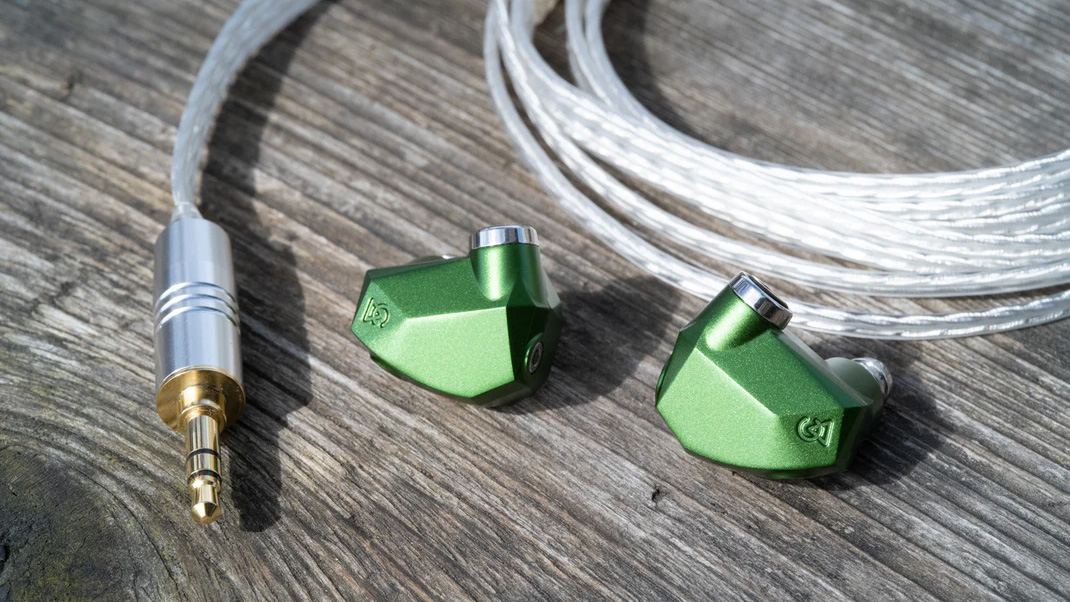
If you want to be made to feel special by your in-ear headphones even before you hear them, the Campfire Audio Andromeda Emerald Sea are for you. When you eventually tear yourself away from their packaging and start to listen, their forthright and revealing sound won't disappoint. Just make sure you’re fine with slightly too much of a good thing - especially where treble response is concerned.
-
+
Brilliantly direct, informative and expansive sound
-
+
Excitingly overwrought packaging and accessories
-
+
Good connectivity options
-
-
Self-consciously odd
-
-
Rather relentless treble reproduction
-
-
Some very capable price-comparable alternatives
Why you can trust T3

Never knowingly understated, Campfire Audio - proud resident of Portland, Oregon - is no stranger to the more esoteric areas of the best wired headphones market. Where both pricing and aesthetics are concerned, in fact, the company is not afraid to go its own way.
These Andromeda Emerald Sea in-ear monitors are just the latest example of those characteristics in action. For the fifth version of its Andromeda in-ear, Campfire Audio has pulled out those few stops that remained in position. But it usually takes more than a hot green finish and a little brass hand (yes, you read that correctly) to make waves in the ‘premium in-ear monitors’ arena.
Andromeda Emerald Sea: Price & Availability
The Andromeda Emerald Sea by Campfire Audio are on sale now, and in the United Kingdom they’re yours for £1399 or thereabouts. In the company’s native America they sell for $1399. While in Australia they go for AU$2299 or something quite like it.
There’s no shortage of competition at this sort of money, of course. Everyone from Audeze to Sennheiser has a pair of pricey, high-performing in-ear monitors with which to tempt you. But no alternative, I think it’s safe to say, offers the sort of ownership experience that Campfire Audio does…
Andromeda Emerald Sea review: Features & What's New?
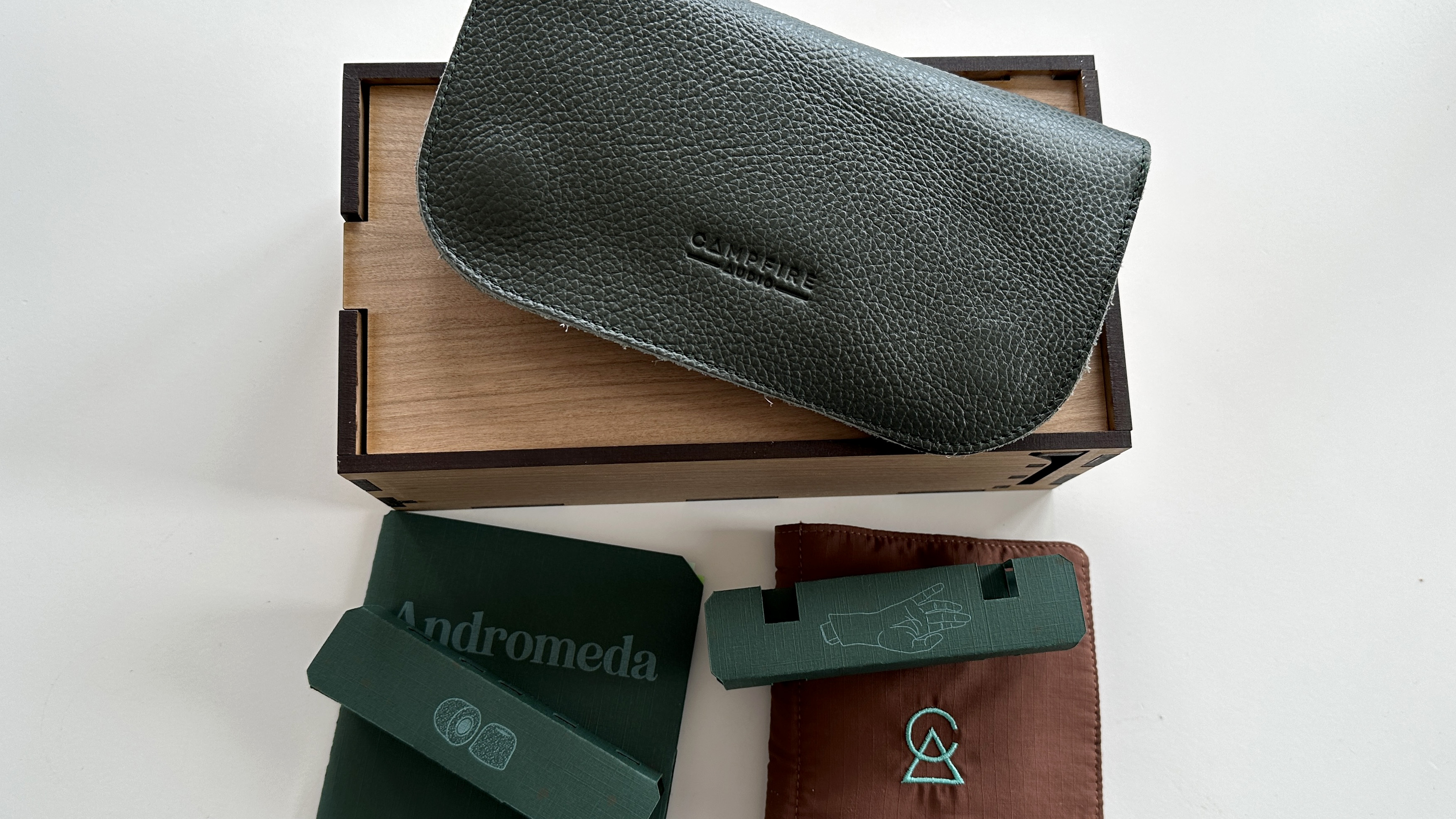
Ordinarily when I review a pair of wired in-ear monitors and discuss their features, I usually end up talking about drivers, frequency response and what-have-you. And rest assured: I’ll get to that sort of stuff soon enough. But no discussion of the Campfire Audio Andromeda Emerald Sea can start anywhere but with the packaging. Even by the company’s gleefully over-the-top standards, the packaging here is remarkable.
The Andromeda Emerald Sea arrive in a wooden box that’s more readily reminiscent of expensive cigars than it is of expensive headphones. It’s inside a cardboard sleeve that carries both the company’s “Nicely Done” strap-line and a line-drawing of a beckoning hand. Or is it a pleading hand? It’s difficult to say.
The box itself is laser-cut, which makes it - according to Campfire Audio - a ‘dimensional folding case’. The lid slides and locks at one end, in the manner of an oversized tombstone - and reveals an image of an undeniably emerald sea on the inside of the lid, as well as the contents of the box.
Get all the latest news, reviews, deals and buying guides on gorgeous tech, home and active products from the T3 experts
Some of the stuff inside is exactly what you’d expect. There are the in-ear monitors themselves, plus three cables. There is a selection of silicone and foam eartips in a variety of sizes, and a tool for their removal and cleaning. The little ‘CA’ lapel badge is here, as it is in all Campfire Audio products.
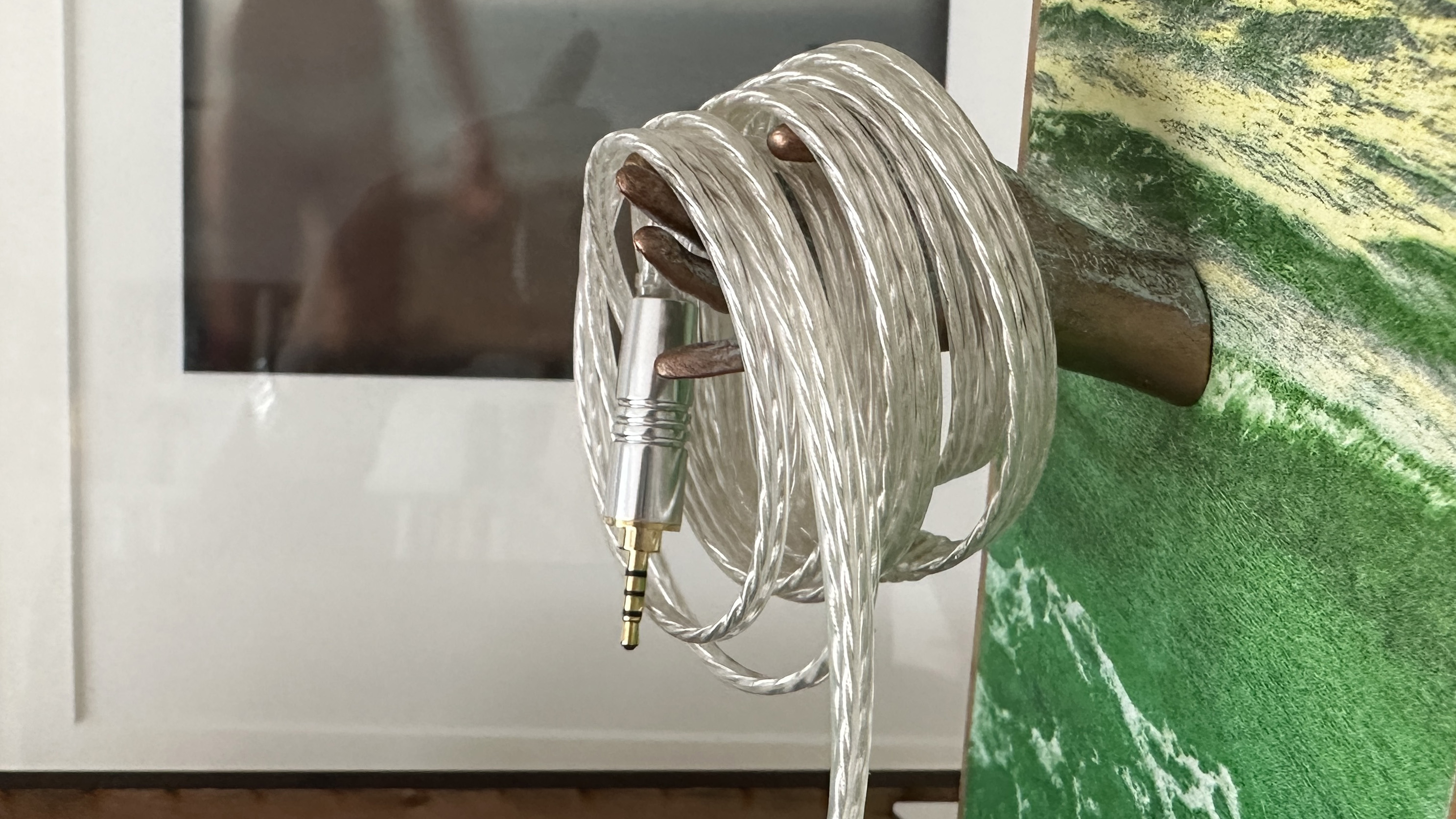
But there are no fewer than three carry-cases included. One is of olive-green leather and is big enough for all three cables plus the Andromeda Emerald Sea earphones themselves, and looks quite a lot like an expensive purse - it closes using magnets and looks about as pricey as it sounds. One is a slightly smaller, nylon number that folds. The third, meanwhile, is a small and perforated alternative that’s made from that sort of synthetic material used in netting and what-have-you.
And then there’s the real peripherals. A little folder contains a user guide, warranty information, a certificate of ownership and authenticity, a Top Trumps-style card explaining what the Andromeda Emerald Sea are particularly good at… and a little short story, signed by the author and concerning the “daring and amazing adventures of Captain Francis Aristarchus”. Oh, and there’s also a little metal hand - it’s the one that’s drawn on the outer packaging, and it fits into the upright lid of the box in order to serve as a support for the cables you’re not using. Because of course it does.
After all that, it’s a relief to find that Campfire Audio has dealt with the actual Andromeda Emerald Sea in-ear monitors with just as much thoroughness as it has their packaging. Inside each earbud’s 3D-printed acoustic chamber there are no fewer than five freshly designed dual-diaphragm balanced armature drivers - two look after the bottom-end of the frequency range, two take care of the higher-frequencies, and the fifth is in charge of midrange reproduction. This arrangement results in a frequency response that Campfire Audio claims is 5Hz - 20kHz, and total harmonic distortion of 0.5%. Unlike previous Andromeda models, sensitivity is an entirely unremarkable 94dB SPL/wM. So it’s not all little brass hands…
Andromeda Emerald Sea review: Performance
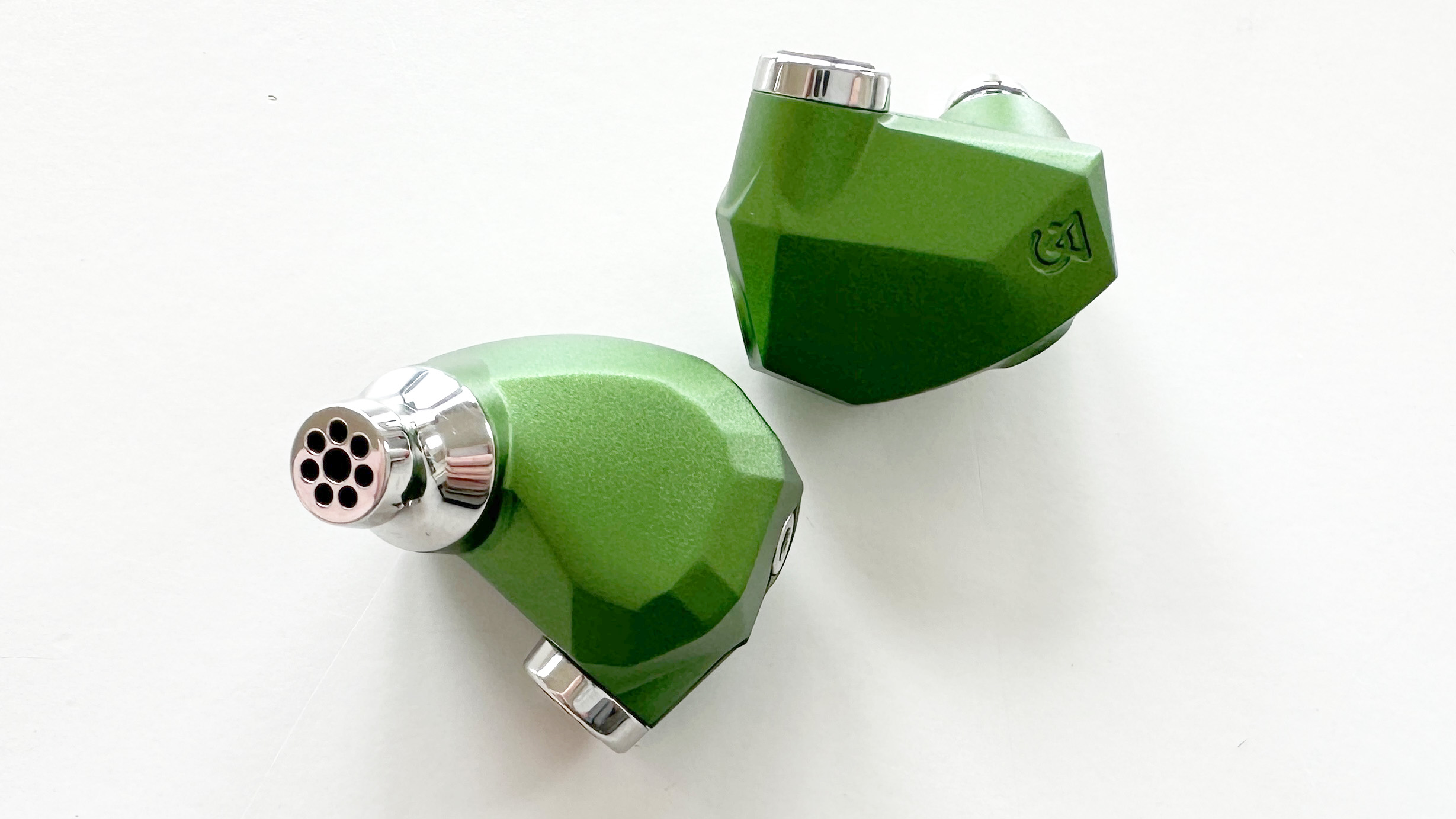
Before you start, make sure the volume on your source player is at ‘zero’. The Andromeda Emerald Sea are, as that sensitivity rating suggests, very easy to drive - so easy, in fact, they sound pretty loud even when their source of content is playing quietly. And there’s plenty to enjoy when these earbuds are playing at a tolerable level.
Detail levels, for instance, are high across the board. At every point of the frequency range, they seem able to wring every scrap of information out of a recording, no matter how minor or transient it might be. The effect is almost widescreen, in that you never feel like you’re missing out on any element of a recording - and the Andromeda Emerald Sea are adept at fitting every element of even the most complicated recordings together seamlessly, so the overall presentation is unified and coherent.
Low frequencies are deep and substantial, properly controlled and with a tasteful level of attack - so there’s punch and drive to the sound, and good rhythmic expression at the same time.
The midrange - which is in being delivered by a single driver, unlike the rest of the frequency range - is positive, direct and naturalistic, with no aspect of a vocal performance given inappropriate weighting.

At the top of the frequency range, the Andromeda Emerald Sea drive on with real determination, to the point that they seem constantly on the verge of hardness, of slight edginess… but unless you’re careless with volume and/or partnering equipment, they never quite make good on that threat. Unless your source player is equally treble-confident this shouldn’t be too much of an issue though.
Dynamic headroom is impressive - even though these in-ears tend to sound like they’re playing loud all the time, if the material you’re listening to demands it then they’re capable of getting much, much louder. They never lose composure, though, and maintain their sonic characteristics in all circumstances. The soundstage they describe is big and well-defined, with plenty of space for individual aspects of a recording to express themselves, and proper attention paid to distances and silences as well as actual sounds.
So while the Andromeda Emerald Sea are a quite forceful, upfront listen, they stop short of outright aggression. ‘Attack’ never overrides ‘control’.
Andromeda Emerald Sea review: Design & Usability
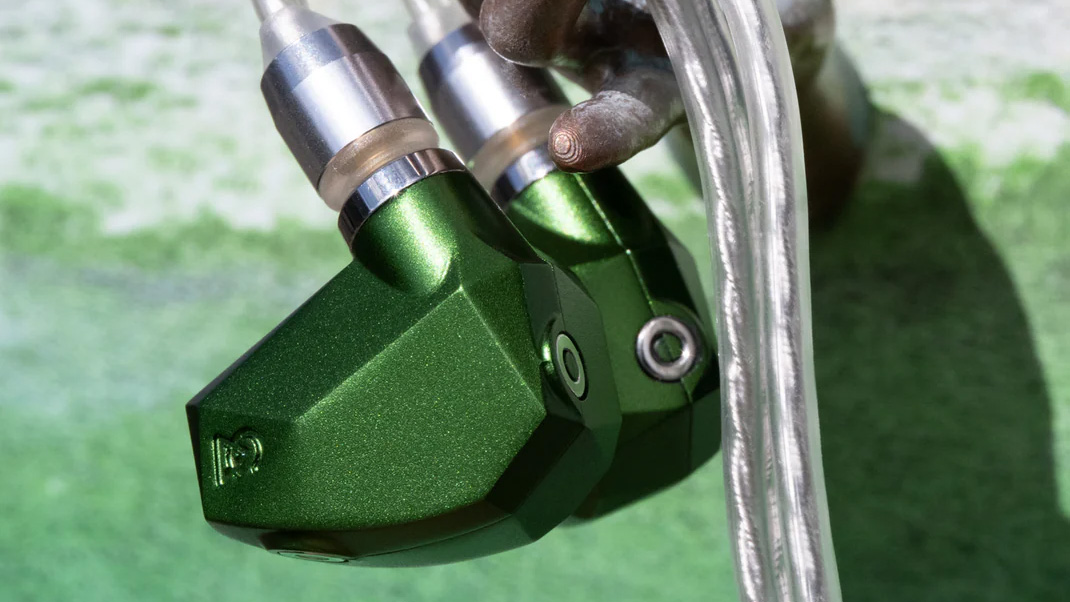
Like previous Andromeda models, these Emerald Sea in-ear monitors are a fairly lurid shade of green. But this new model is a little smaller, a little less angular in its shape, slightly smoother - and, as a consequence, considerably more comfortable to wear. There’s still no mistaking them for the product of any other company, mind you.
The spouts onto which the eartips fit are made of stainless steel, and the fasteners for the MMCX cable connectors are copper and beryllium. Campfire Audio supplies three cables, which with predictable wackiness it has called ‘Time Stream’. They’re usefully flat, have silver-plated conductors, and feature 2.5mm, 3.5mm and 4.4mm terminations. So there should be no problem connecting to any source player worthy of partnering with the Andromeda Emerald Sea.
Campfire Audio Andromeda Emerald Sea review: Verdict
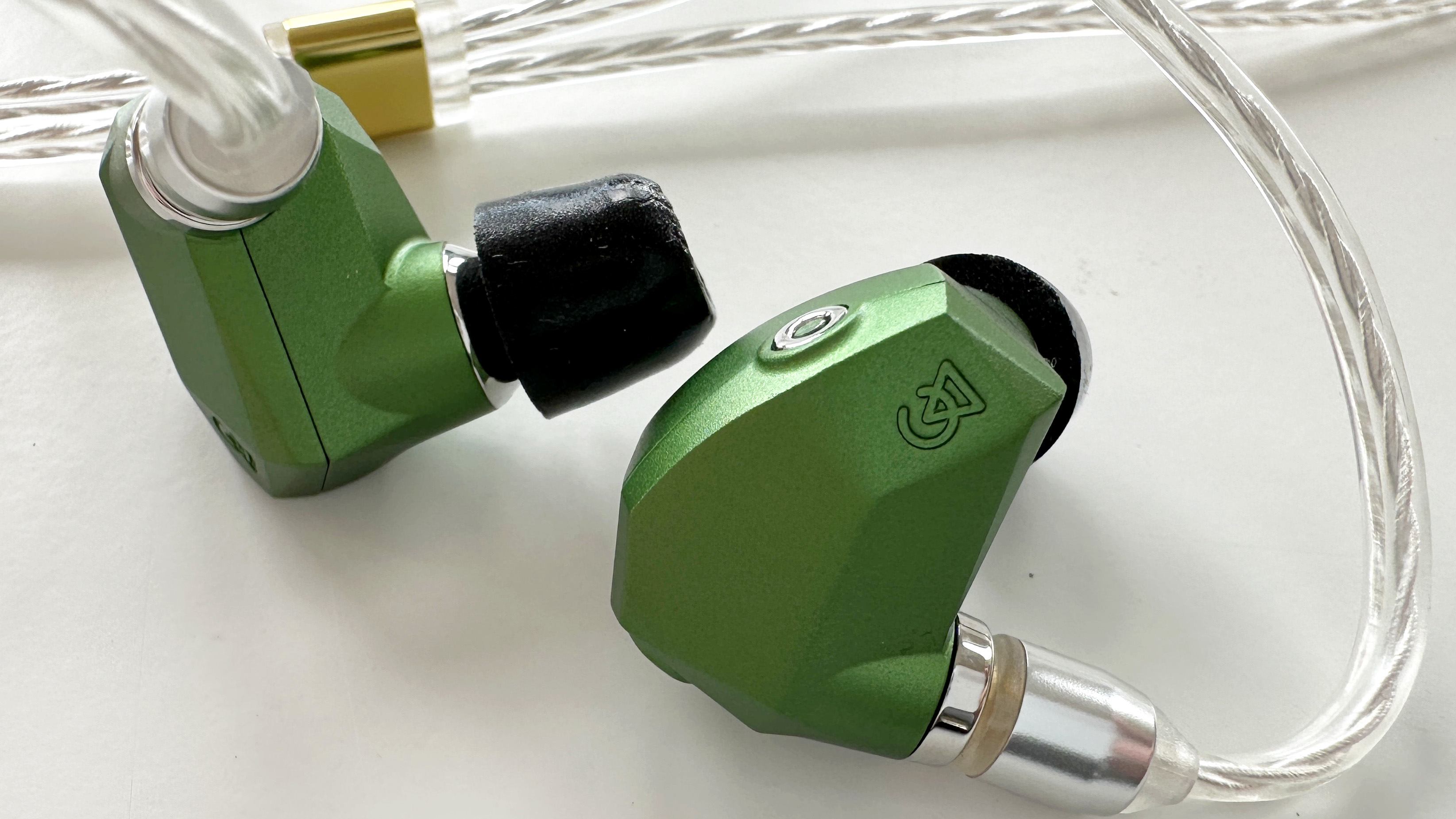
If you want to be made to feel special by your in-ear headphones even before you hear them, the Campfire Audio Andromeda Emerald Sea are for you. If this is your target level of spend, anyway.
When you eventually tear yourself away from their packaging and start to listen, their forthright and revealing sound is unlikely to disappoint. Just make sure you’re fine with slightly too much of a good thing, especially where treble response is concerned.
Also consider
At the opposite end of the wackiness scale to Campfire Audio we find Sennheiser, whose IE900 wired in-ear monitors are as businesslike and unflippant as it’s possible to be - they’re also a stunningly balanced and insightful listen.
As for the larger-eared among us, Audeze has managed to miniaturise its favoured planar magnetic driver technology into an in-ear monitor called Euclid - they're big ‘buds with great sound.
Simon Lucas is a freelance technology journalist and consultant, with particular emphasis on the audio/video aspects of home entertainment. Before embracing the carefree life of the freelancer, he was editor of What Hi-Fi? magazine and website – since then, he's written for titles such as Wired, Metro, the Guardian and Stuff, among many others. Should he find himself with a spare moment, Simon likes nothing more than publishing and then quickly deleting tweets about the state of the nation (in general), the state of Aston Villa (in particular) and the state of his partner's cat.
